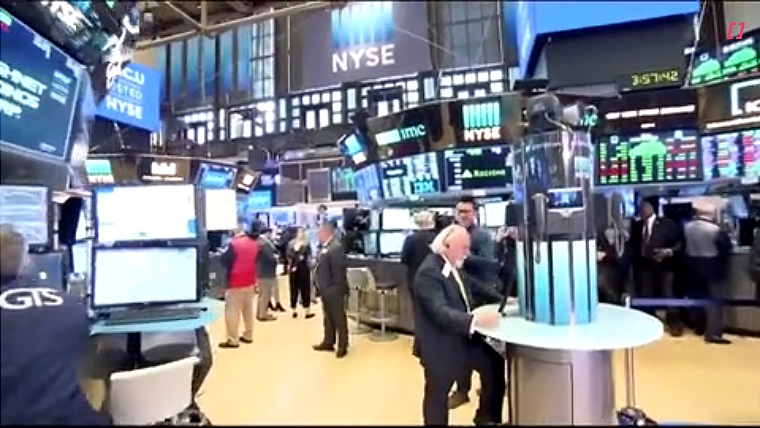
A larger than expected fall in US initial jobless claims allayed fears of a pending US recession, sending US equities much higher and US Treasury yields higher, with the 10-year rate returning to a 4% handle. Hawkish RBA comments supported the AUD. NZ inflation expectations data supported the already-strong case for easier monetary policy and the NZD has managed hold 0.60 despite lower short-rates, with the backdrop of higher risk appetite providing some support.
US initial jobless claims fell 17k last week to 233k, a larger drop than the market expected while continuing claims were in line at 1875k. The usual health warning applies around this time of year, given auto shutdowns, school holidays and the impact of Hurricane Beryl but the market took the data positively, with less fear of recession ahead – the broad deterioration of the labour market being on a steady rather than non-linear path, consistent with a soft landing.
It's unusual for this volatile weekly release to cause a sustained market reaction, but with the market fickle and on edge after the recent tumble in rates and equity markets, that has been the response. US equity market futures jumped higher on the release and the cash market opened on a strong note and with gains improving into the afternoon session. The S&P500 is currently up over 2%, with the Nasdaq index heading towards a 3% gain.
The data reduced the chance of the Fed panicking with an intra-meeting rate cut and the market pared back the extent of easing priced into the curve. The market prices in 40bps of cuts for the next September meeting (from 45bps the previous day), 103bps by year-end (from 111bps) and Treasury yields are higher across the curve. The 2-year rate is up 8bps to 4.04% while the 10-year rate is up 5bps, hovering around the 4% mark.
The USD jumped higher following the data and rates market reaction, before paring some of that gain. The backdrop of higher rates and risk appetite has seen the yen underperform, with USD/JPY up to 147.30 and NZD/JPY recovering further to 88.5. EUR is slightly weaker while GBP is modestly stronger. NZD/GBP has nudged back down towards 0.47 while NZD/EUR has regained the 0.55 handle.
RBA Governor Bullock offered up some hawkish soundbites in a speech yesterday, saying the Board “remains vigilant with respect to upside risks on inflation and will not hesitate to raise rates if it needs to. I know this is not what people want to hear. But the alternative of persistently high inflation is worse”. These comments supported the AUD and overnight its gain has been extended, seeing it up over 1% from this time yesterday to 0.6590, the strongest of the majors.
The RBNZ’s survey of expectations showed a drop in inflation expectations across all horizons, with the 2-year rate down 30bps to 2.03% and the long term 5 and 10-year measures also closing in on 2%. The Bank will be very happy with the result, giving it confidence that tight policy has done the necessary work in bringing inflation expectations down to target. The NZD weakened a little after this survey, before global forces took over. After a dip below 0.5980 overnight, the NZD has returned to just over 0.60, supported by higher risk appetite. The combo of the hawkish RBA and the soft NZ inflation expectations data drove NZD/AUD lower, with the fall extending overnight, taking the cross down to 0.9115.
Weaker inflation expectations data saw the earlier fall in NZ rates extended into the close, with the OIS market pricing in 20bps worth of rate cuts for next week’s meeting or an 80% chance of a 25bps cut. ASB joined BNZ in calling the RBNZ kicking off the easing cycle next week. There are no more excuses for not cutting rates, with the economy mired in recession, the unemployment rate on a steady upward climb, annualised inflation back within the target range for the past 3 quarters (based on seasonally adjusted CPI figures of 0.6-0.7% q/q), and inflation expectations back close to the mid-point of the target range. All indicators point to inflation falling further, given the lagged impact of restrictive policy.
The 2-year swap rate closed the day down 10bps to 4.04%, with notable curve steepening as the 10-year rate fell by just 2bps to 4.05%, with similar moves for NZGBs. The weekly bond tender saw strong bidding interest for the 2041s on offer, with a bid-cover ratio of over 4 and priced close to 3bps below prevailing mids, while interest in the other two lines was more moderate.
Oil has recovered further, with benchmarks up around 1%, seeing Brent Crude trade with a USD79 handle. Higher risk appetite has been supportive but there is also one eye on Middle East tensions. The WSJ headlines that the US has sent clear messaging to Iran that the risk of a major escalation if they do a significant retaliatory attack against Israel is extremely high.
The data calendar remains light into the weekend, with China inflation data and Canada’s employment report the only releases of note.

We welcome your comments below. If you are not already registered, please register to comment.
Remember we welcome robust, respectful and insightful debate. We don't welcome abusive or defamatory comments and will de-register those repeatedly making such comments. Our current comment policy is here.